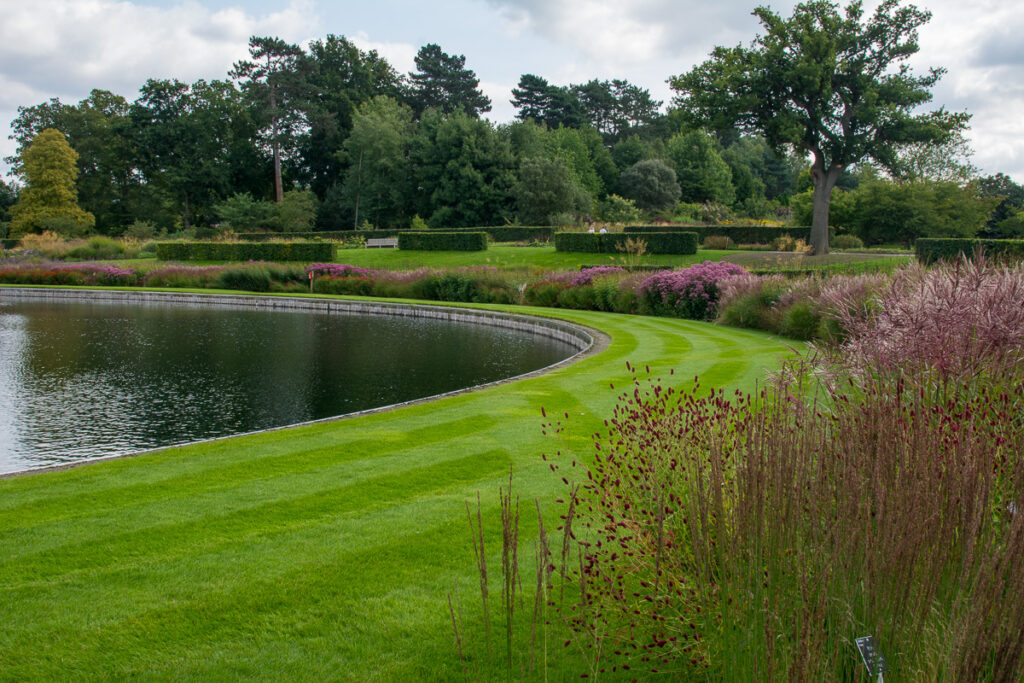
A well known fact in our industry is that people often impulse buy when at garden centers and end up with one of this and one of that. Whilst it feels frivolous and perhaps even rather extravagant ‘dot’ planting really does leave a garden feeling uneasy, busy and sometimes even restless. Next time you’re buying get a larger quantity, even if that is 3 or 5 and plant them together to form a larger planting area of one plant.
To really get repetition right you would need to repeat that planting again further down the border, so you could buy 9 of the same plant and plant 3 lots of 3, or if you had 3 small borders you could plant 3 in each. If you only have one border and a few small containers you could repeat the planting from border to container. These methods have a great effect of steadying the planting design and it helps each area relate to each other giving a calming and more harmonious effect.
If this concept of repeat planting is fairly new to you then I suggest next time you visit a National Trust property or a local garden that is open to the public see if you can spot the repetition in the planting and ask yourself how it feels. It could well be in one border or if you stop and look around the same plant could be used en-masse in a lot of borders. Our main photograph is of the lakeside borders at RHS Wisley but it’s a great example of repetition done well.
Three well known plants that can be used in repetition planting and look good when planted en-masse together are:
Stipa tenuissima, which works well planted at the edge of borders in groups of 3 or more, it not only adds movement but looks great with other perennials such as Sedum. It likes full sun, well drained soil and gets to around 60cm in height and can look at home in a gravel garden and containers too.
Buxus sempervirens (Box) is a very popular plant for topiary and can come in many shapes. Cone shapes add height and interest to the border whereas balls or domes give the eye a resting place and anchor the rest of the planting to the design. It also works very well when planted at either end of the border as a horticultural ‘full stop’. It is quite expensive so it’s always best to plan this one before you buy, and you’ll need some topiary shears if you’re keeping it in shape! Generally it will be happy in part shade and well drained soil. Taxus baccata (Yew) - even more expensive than Box - is also a popular choice for topiary especially as Box has suffered a lot from blight in recent years.
Alliums with their globe shape add height, an architectural quality and great texture – so why not repeat them around the garden? There are so many to choose from but one that I’m rather partial to (and the bees love it!) which isn’t quite as popular as others is Allium sphaerocephalon which has egg shaped, claret coloured flower heads that stand 60-70cms tall. Ideally it has to be well drained soil in full sun for them to thrive and they are best planted in drifts.




